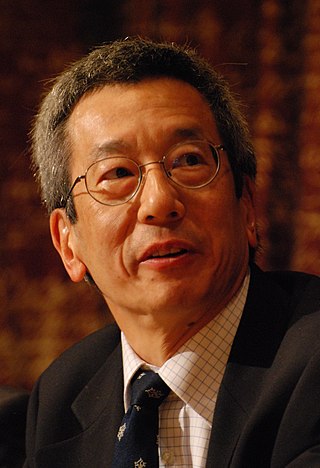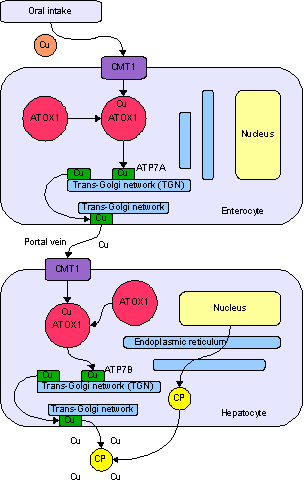Related Research Articles

Bruce Nathan Ames was an American biochemist who was a professor of biochemistry and Molecular Biology Emeritus at the University of California, Berkeley, and was a senior scientist at Children's Hospital Oakland Research Institute (CHORI). Ames made contributions to understanding the mechanisms of mutagenesis and DNA repair. He invented the Ames test, a widely used assay for easily and cheaply evaluating the mutagenicity of compounds. The test revolutionized the field of toxicology and has played a crucial role in identifying numerous environmental and industrial carcinogens.
Dale Sanders, FRS is a plant biologist and former Director of the John Innes Centre. The centre is an institute for research in plant sciences and microbiology, in Norwich, England.
Tak Wah Mak, is a Canadian medical researcher, geneticist, oncologist, and biochemist. He first became widely known for his discovery of the T-cell receptor in 1983 and pioneering work in the genetics of immunology. In 1995, Mak published a landmark paper on the discovery of the function of the immune checkpoint protein CTLA-4, thus opening the path for immunotherapy/checkpoint inhibitors as a means of cancer treatment. Mak is also the founder of Agios Pharmaceuticals, whose lead compound, IDHIFA®, was approved by the FDA for acute myeloid leukemia in August 2017, becoming the first drug specifically targeting cancer metabolism to be used for cancer treatment. He has worked in a variety of areas including biochemistry, immunology, and cancer genetics.
Philip Handler was an American nutritionist, and biochemist. He was President of the United States National Academy of Sciences for two terms from 1969 to 1981. He was also a recipient of the National Medal of Science.
William E.M. Lands is an American nutritional biochemist who is among the world's foremost authorities on essential fatty acids.

Roger Yonchien Tsien was an American biochemist. He was a professor of chemistry and biochemistry at the University of California, San Diego and was awarded the Nobel Prize in Chemistry in 2008 for his discovery and development of the green fluorescent protein, in collaboration with organic chemist Osamu Shimomura and neurobiologist Martin Chalfie. Tsien was also a pioneer of calcium imaging.
The Federation of American Societies for Experimental Biology (FASEB), based in Rockville, Maryland, is a non-profit organization of scientific societies in the United States. With a focus on the biological and biomedical sciences, the federation represents scientists in such fields as anatomy, physiology, immunology, biochemistry, molecular biology, toxicology, genetics, and nutrition.

Jeehiun Katherine Lee is an organic chemist and a professor in the department of chemistry at Rutgers University. She currently runs a research lab on the New Brunswick campus.
Charles Brenner is the inaugural Alfred E Mann Family Foundation Chair of the Department of Diabetes & Cancer Metabolism at the Beckman Research Institute of the City of Hope National Medical Center. Brenner previously held the Roy J. Carver Chair in Biochemistry and was head of biochemistry at the University of Iowa.

Robert Kellogg Crane was an American biochemist best known for his discovery of sodium–glucose cotransport.
The American Society for Pharmacology and Experimental Therapeutics (ASPET) is a scientific society founded in late 1908 by John Jacob Abel of Johns Hopkins University, with the aim of promoting the growth of pharmacological research. Many society members are researchers in basic and clinical pharmacology who help develop disease-fighting medications and therapeutics. ASPET is one of the constituent societies of the Federation of American Societies for Experimental Biology (FASEB). The society's headquarters are in Rockville, MD. The current president is Michael F. Jarvis.

Copper is an essential trace element that is vital to the health of all living things. In humans, copper is essential to the proper functioning of organs and metabolic processes. Also, in humans, copper helps maintain the nervous system, immune system, brain development, and activates genes, as well as assisting in the production of connective tissues, blood vessels, and energy. The human body has complex homeostatic mechanisms which attempt to ensure a constant supply of available copper, while eliminating excess copper whenever this occurs. However, like all essential elements and nutrients, too much or too little nutritional ingestion of copper can result in a corresponding condition of copper excess or deficiency in the body, each of which has its own unique set of adverse health effects.
Simin Nikbin Meydani is an Iranian-American nutrition scientist and professor who is the Vice Provost of Research at Tufts University.
Zena Werb was a professor and the Vice Chair of Anatomy at the University of California, San Francisco. She was also the co-leader of the Cancer, Immunity, and Microenvironment Program at the Hellen Diller Family Comprehensive Cancer Center and a member of the Executive Committee of the Sabre-Sandler Asthma Basic Research Center at UCSF. Her research focused on features of the microenvironment surrounding cells, with particular interest in the extracellular matrix and the role of its protease enzymes in cell signaling.
Karen Koch is a plant biologist in the horticultural science department in the University of Florida. She is a professor in the Plant Molecular and Cellular Biology (PMCB) Program, Horticultural Sciences Department, and Genetics Institute at University of Florida.
Paul Hargrave is an American biochemist whose laboratory work established key features of the structure of rhodopsin.
Guillermina 'Gigi' Lozano is an American geneticist. She is a Professor and Hubert L. Olive Stringer Distinguished Chair in Oncology in Honor of Sue Gribble Stringer at the University of Texas MD Anderson Cancer Center, Houston, Texas. Lozano is recognised for her studies of the p53 tumour suppressor pathway, characterising the protein as a regulator of gene expression and that is disturbed in many cancers. She was the first to recognize that the p53 gene encoded a transcriptional activator of other genes Her lab has made significant contributions by developing and analyzing mouse models to study the activities of mutant p53, revealing how these mutations drive tumor development and progression. She also found out how the Mdm2 and Mdm4 proteins work in the body, especially in stopping cancer and controlling p53. This research suggested that blocking Mdm2/4 could be a new way to treat cancer.
Barbara B. Kahn is an endocrinologist and the George Richards Minot professor of medicine at Harvard Medical School. She is also the vice chair for research strategy in the department of medicine at Beth Israel Deaconess Medical Center, and was formerly the chief of the Division of Endocrinology, Diabetes, and Metabolism at Beth Israel Deaconess. Her research focuses on insulin resistance and type 2 diabetes.
Robert Harold Wasserman was a professor of veterinary medicine and a research scientist, known as the principal investigator leading the scientists credited with the discovery of calcium-binding proteins.

Bettie Sue Siler Masters is an adjunct professor at Duke University known for her work on nitric oxide synthase and cytochrome P450 reductase. She was the 1992 recipient of the FASEB Excellence in Science Award, and has been elected as a member of the National Academy of Medicine and as a fellow of the American Association for the Advancement of Science.
References
- 1 2 3 4 5 6 7 8 9 10 11 12 13 14 15 16 17 Cousins, Robert J. (2016). "Driving Along the Zinc Road". Annual Review of Nutrition. 36: 1–15. doi: 10.1146/annurev-nutr-071715-050854 . PMID 27090747.
- ↑ "Cousins". The Kingston Daily Freeman. Kingston, New York. 19 October 1968. p. 7.
- 1 2 3 "DR. ROBERT J. COUSINS". Food Science and Human Nutrition Department. University of Florida.
- 1 2 Cousins, Robert J. (1991). "President's Report". Annual Report 1991 (PDF). Federation of American Societies for Experimental Biology. pp. 2, 14.
- ↑ Garrison, Howard H.; Bond, Judith S.; Bradshaw, Ralph A. (June 2020). "A brief history of FASEB and its programs and activities". FASEB BioAdvances. 2 (6): 331–338. doi: 10.1096/fba.2020-00009 . PMC 7325587 . PMID 32617519.
- ↑ Institute of Medicine (1997). "Appendix B: Biographical Sketches". Emerging Technologies for Nutrition Research: Potential for Assessing Military Performance Capability. Washington, DC: National Academies Press. doi:10.17226/5827. ISBN 978-0-309-05797-4. PMID 25121304 . Retrieved 7 June 2021.
- ↑ Swan, Patricia B. (2003-03-01). "The American Society for Nutritional Sciences (1979–2003): Years of Action and Change". The Journal of Nutrition. 133 (3): 646–656. doi: 10.1093/jn/133.3.646 . PMID 12612131 . Retrieved 7 June 2021.
- ↑ Proposed Regulations of the Office of Government Ethics for the Standards of Conduct of Executive Branch Employees: Hearing Before the Subcommittee on Human Resources of the Committee on Post Office and Civil Service, House Of Representatives, One Hundred Second Congress, First Session, October 22, 1991. United States Congress. House. Committee on Post Office and Civil Service. Subcommittee on Human Resources U.S. Government Printing Office, 1992. 1992. pp. 169–174. ISBN 9780160385155.
- ↑ Shu Chien (1992). "Meeting the challenges of public policy". Annual Report 1992 (PDF). Federation of American Societies for Experimental Biology. pp. 4–5.
- ↑ "2018 American Society for Nutrition Foundation Honorees" (PDF). American Society for Nutrition. 2018. Retrieved 7 June 2021.
- ↑ "Robert Cousins". National Academy of Sciences. Retrieved 8 January 2021.
- ↑ Holloway, June (August 28, 2003). "Nutritionist wins $50,000 award". The Scientist. Retrieved 7 June 2021.
- 1 2 "Robert J. Cousins, PhD". Robert J. Cousins, PhD. Retrieved 2021-06-04.
- ↑ "Award Winners - 2010" (PDF). Nutrition News. No. March. 2010. p. 11. Retrieved 7 June 2021.